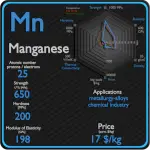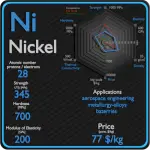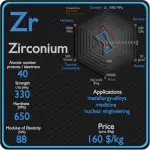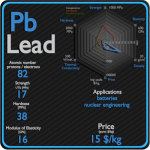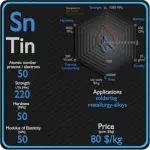This article contains comparison of key thermal and atomic properties of iron and copper, two comparable chemical elements from the periodic table. It also contains basic descriptions and applications of both elements. Iron vs Copper.

Iron and Copper – About Elements
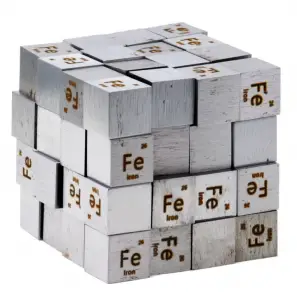

Source: www.luciteria.com
Iron and Copper – Applications
Iron
Iron is used in numerous sectors such as electronics, manufacturing, automotive, and construction and building. Iron is the most widely used of all the metals, accounting for over 90% of worldwide metal produc0tion. Its low cost and high strength often make it the material of choice material to withstand stress or transmit forces, such as the construction of machinery and machine tools, rails, automobiles, ship hulls, concrete reinforcing bars, and the load-carrying framework of buildings. Since pure iron is quite soft, it is most commonly combined with alloying elements to make steel. Steels are iron–carbon alloys that may contain appreciable concentrations of other alloying elements. Adding a small amount of non-metallic carbon to iron trades its great ductility for the greater strength. Due to its very-high strength, but still substantial toughness, and its ability to be greatly altered by heat treatment, steel is one of the most useful and common ferrous alloy in modern use. There are thousands of alloys that have different compositions and/or heat treatments. The mechanical properties are sensitive to the content of carbon, which is normally less than 1.0 wt%.
Copper
Historically, alloying copper with another metal, for example tin to make bronze, was first practiced about 4000 years after the discovery of copper smelting, and about 2000 years after “natural bronze” had come into general use. An ancient civilization is defined to be in the Bronze Age either by producing bronze by smelting its own copper and alloying with tin, arsenic, or other metals. The major applications of copper are electrical wire (60%), roofing and plumbing (20%), and industrial machinery (15%). Copper is used mostly as a pure metal, but when greater hardness is required, it is put into such alloys as brass and bronze (5% of total use). Copper and copper-based alloys including brasses (Cu-Zn) and bronzes (Cu-Sn) are widely used in different industrial and societal applications. Some of the common uses for brass alloys include costume jewelry, locks, hinges, gears, bearings, ammunition casings, automotive radiators, musical instruments, electronic packaging, and coins. Bronze, or bronze-like alloys and mixtures, were used for coins over a longer period. is still widely used today for springs, bearings, bushings, automobile transmission pilot bearings, and similar fittings, and is particularly common in the bearings of small electric motors. Brass and bronze are common engineering materials in modern architecture and primarily used for roofing and facade cladding due to their visual appearance.
Iron and Copper – Comparison in Table
| Element | Iron | Copper |
| Density | 7.874 g/cm3 | 8.92 g/cm3 |
| Ultimate Tensile Strength | 540 MPa | 210 MPa |
| Yield Strength | 50 MPa | 33 MPa |
| Young’s Modulus of Elasticity | 211 GPa | 120 GPa |
| Mohs Scale | 4.5 | 3 |
| Brinell Hardness | 490 MPa | 250 MPa |
| Vickers Hardness | 608 MPa | 350 MPa |
| Melting Point | 1538 °C | 1084.62 °C |
| Boiling Point | 2861 °C | 2562 °C |
| Thermal Conductivity | 80.2 W/mK | 401 W/mK |
| Thermal Expansion Coefficient | 11.8 µm/mK | 16.5 µm/mK |
| Specific Heat | 0.44 J/g K | 0.38 J/g K |
| Heat of Fusion | 13.8 kJ/mol | 13.05 kJ/mol |
| Heat of Vaporization | 349.6 kJ/mol | 300.3 kJ/mol |









